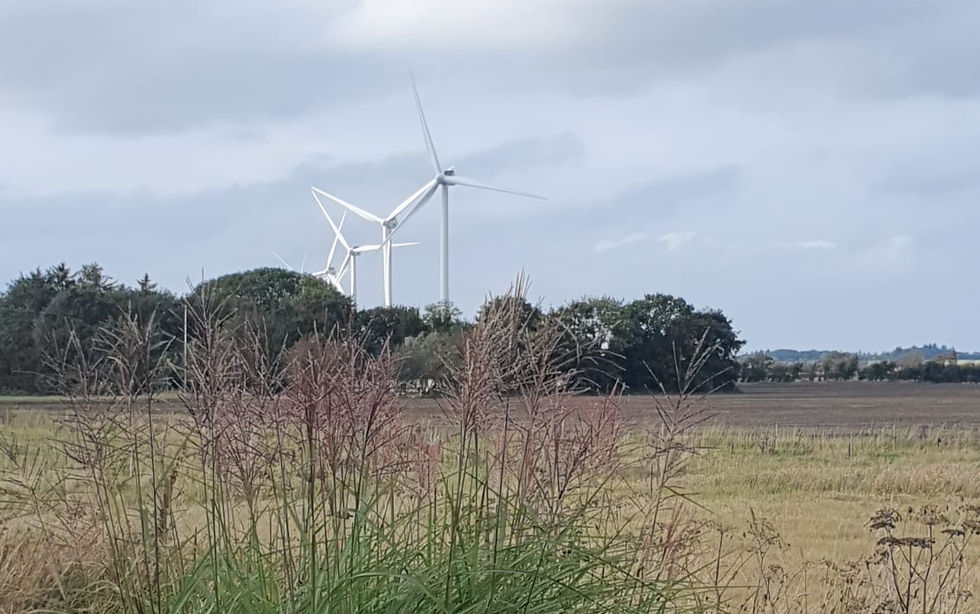
In 1883 Josef Friedländer unveiled the first electricity-generating wind turbine at the Vienna International Electrical Exhibition. A few years later in 1887, James Blyth installed the first working wind turbine in his front garden in Scotland.
Later in 1891 a Danish scientist, Poul la Cour, living in rural Denmark, developed an electricity-generating wind turbine which he then further developed to be able to create a steady stream of electricity. La Cour then developed this further and created the first prototype electrical power plant powered by his windmill and used it to power lights through his village.
Over the next 100 years (yes this is not new technology!) Denmark has championed wind power through both a top down government policy approach with financial incentives as well as a bottom up approach where cooperatives were encouraged to further develop and take ownership of wind power in their local area. Furthermore, grass roots entrepreneurs were encouraged and became the pioneers of technology advancements in the country. This combined top-down and bottom-up approach has allowed Denmark to become the global leaders in the wind power industry.
The general acceptance of wind turbines in Denmark has come from how the Government established the first subsidies for the construction and operation of wind parks. A report written by the United Nations Climate Change Technology Executive Committee confirmed that by the late 1990s, there were over 2,100 wind energy cooperatives, including more than 100,000 families owning almost 90% of the 6,300 wind turbines in operation in the country. This public ownership generated huge support for wind power and the turbines that were popping up all over the landscape. Over time, this has allowed the country to be able to meet 48% of its domestic electricity supply in 2020 by wind-generated power - well on their way to meet their 55% target by 2030.
Local cooperatives allowed land owners to provide space for wind turbines as well as benefit through revenue generated by selling surplus supply back to the grid. This meant that many farmers were able to subsidise their income by including revenue earned from surplus energy created by the wind turbines on their land.

As a child I visited Denmark every summer and even from my earliest memories recall the sight of crisp white turbines majestically rotating against pure blue skies. Over the years, more and more turbines cropped up along field perimeters and they became an integral part of the landscape.
Now the big question is - will we ever be as accepting of wind turbines in this country?
With Labour lifting the policy embargo on on-shore wind power – will this be enough to jump start a new wind power era? From my experience, it is the public whose minds need to be changed into seeing wind turbines as a green solution and not a visual blight on the horizon. Perhaps by allowing public ownership of the turbines will help to gain better buy-in from locals who could then benefit directly from the electricity produced?
Labour have stated that they will back the builders – not the blockers – when it comes to clean and cheap power be it wind, solar and hydro and go on further to commit to making £600m of funding available for local authorities and £400m low interest loans each year for communities to facilitate it. This would suggest that they may be using a similar model to Denmark when it comes to empowering local people and communities to support their own wind projects.
I, personally, think that turbines look better individually or in small clusters, rather than mass farms. Perhaps we can incentivise farmers to site turbines on the edges of their fields allowing smaller clusters of turbines to be erected whilst allowing the farmers to benefit from the revenue by selling any surpluses back to the grid.

Perhaps we can reach a point where wind turbines become an integral part of our landscape and we stop seeing them as an intrusive built form, and rather a piece of architectural engineering that is helping to create a greener environment for us all.
An individual wind turbine, like that at Green Park, Reading or on the Downs above Glyndebourne Opera House become way finders and iconic visual aids in their locality. They start to give a space it's own identify and character with associated connotations of green, clean energy.
The below photo (courtesy of google street view) shows the Glyndebourne windmill on the ridge of the South Downs - sited incidentally on the site of a historic mill. It is however, easy not to see the windmill amidst the distracting plethora of pylons littering the nearby fields.

Well, I'll wait with eager anticipation to see how this plays out, as a fan of wind power, I know what I would prefer to see in our countryside...
I'll leave these pictures here for you to make up your own mind on the matter too...
Information sources: 85bd141304c5486fb7f2ef71f8d2d45f.pdf (unfccc.int) and History of wind turbines (renewableenergyworld.com). Pylon image from Pylons - Colne Stour website.
Wind turbine photos with thanks to my Dad - and apologies for interrupting your holiday in Denmark last week to go off to take photos of them!





Comments